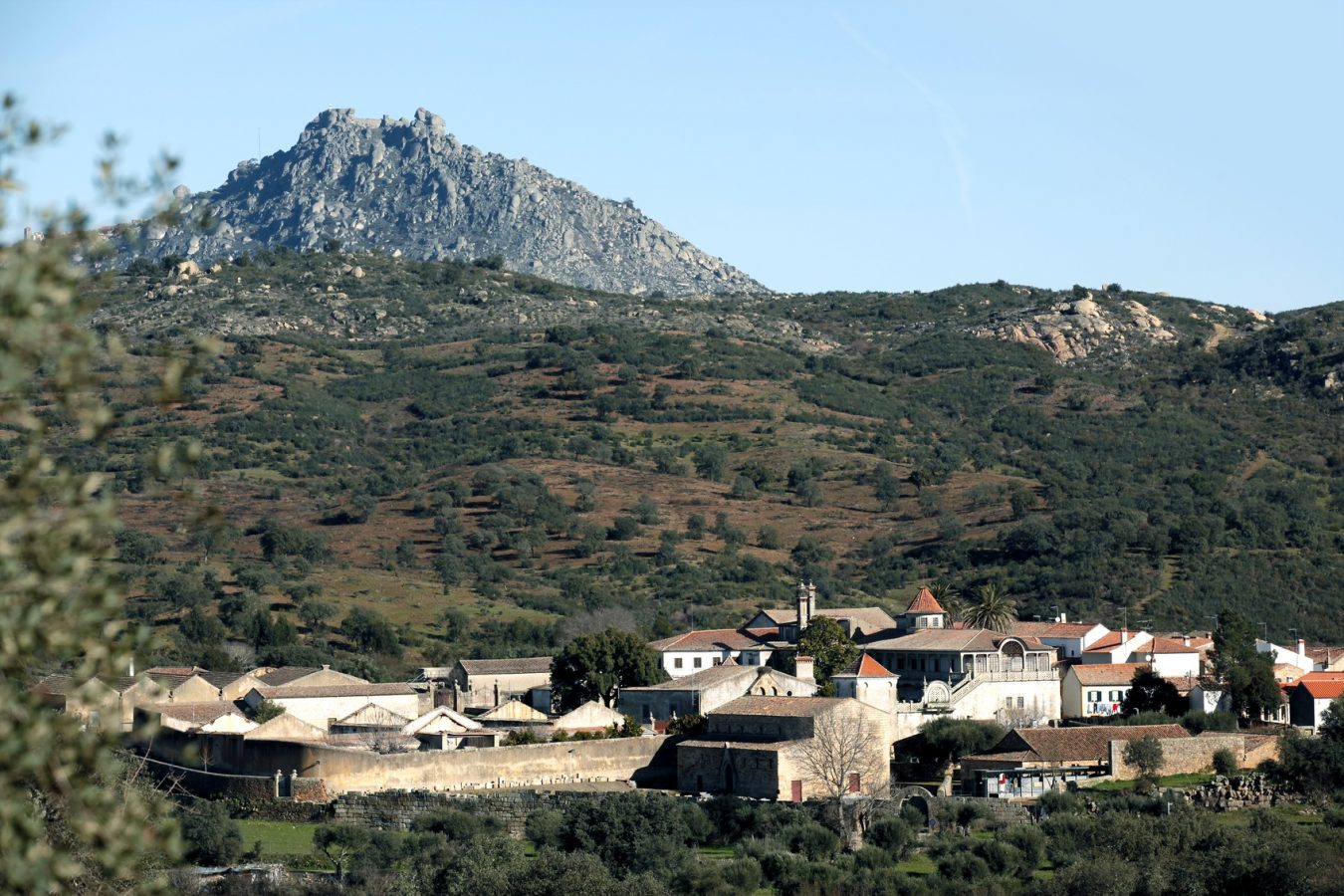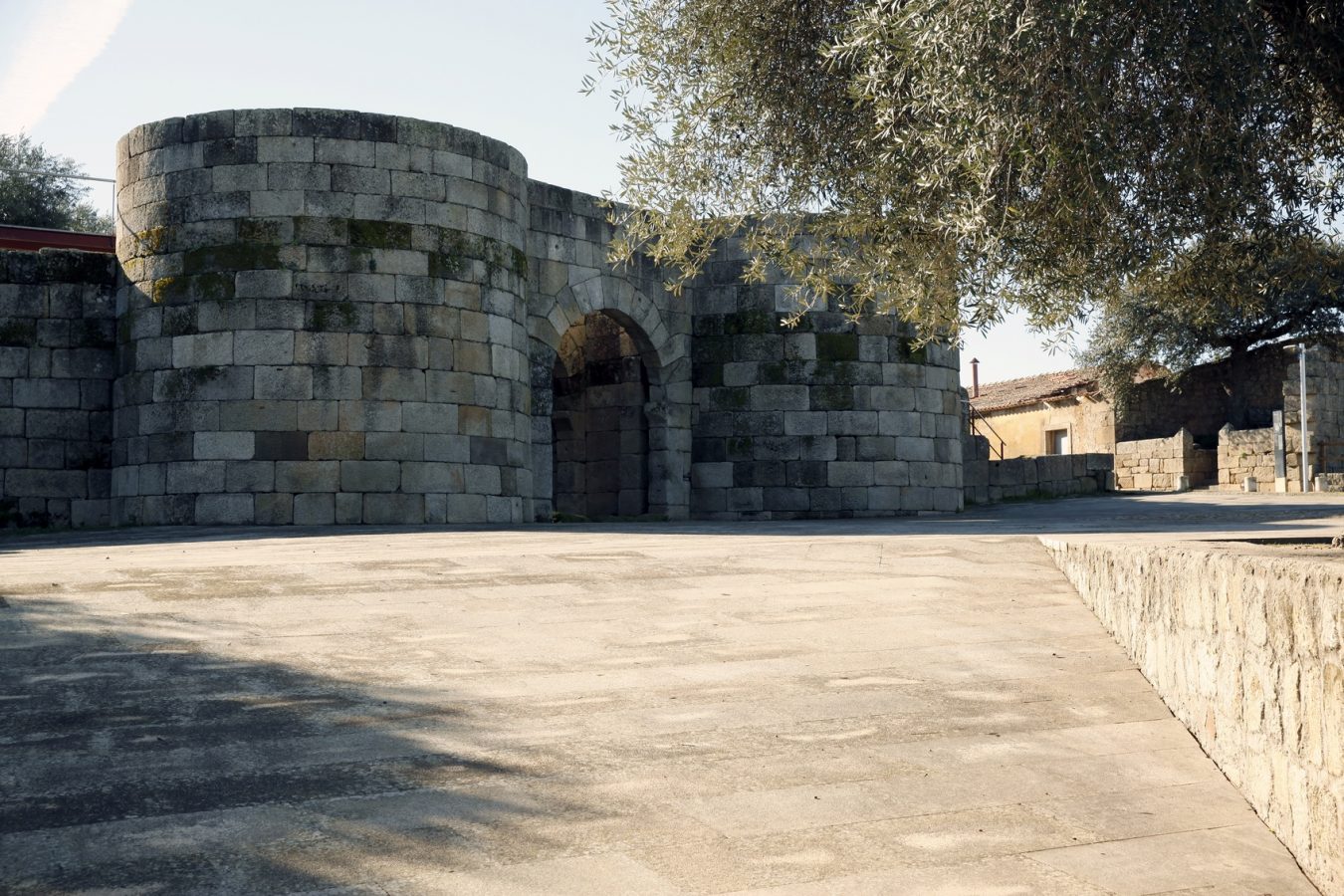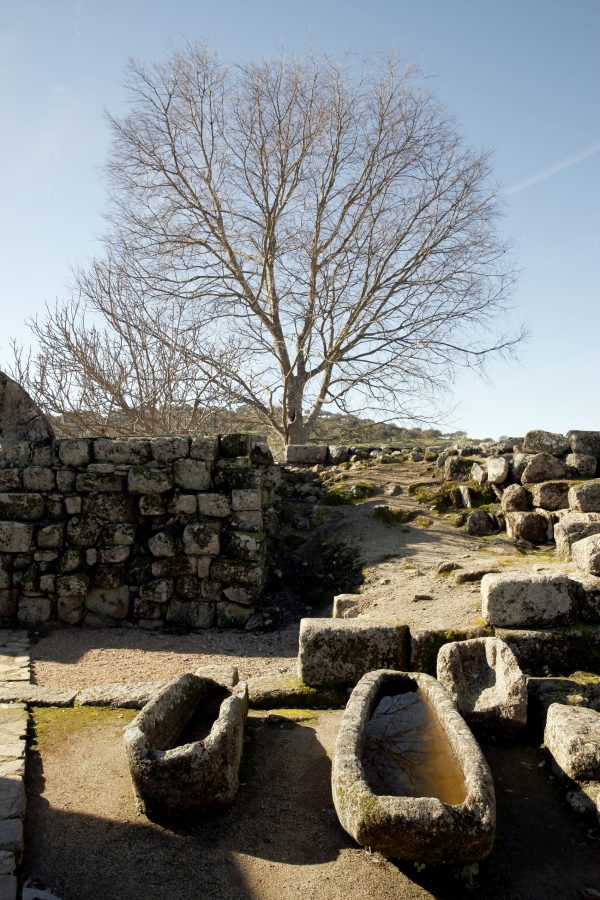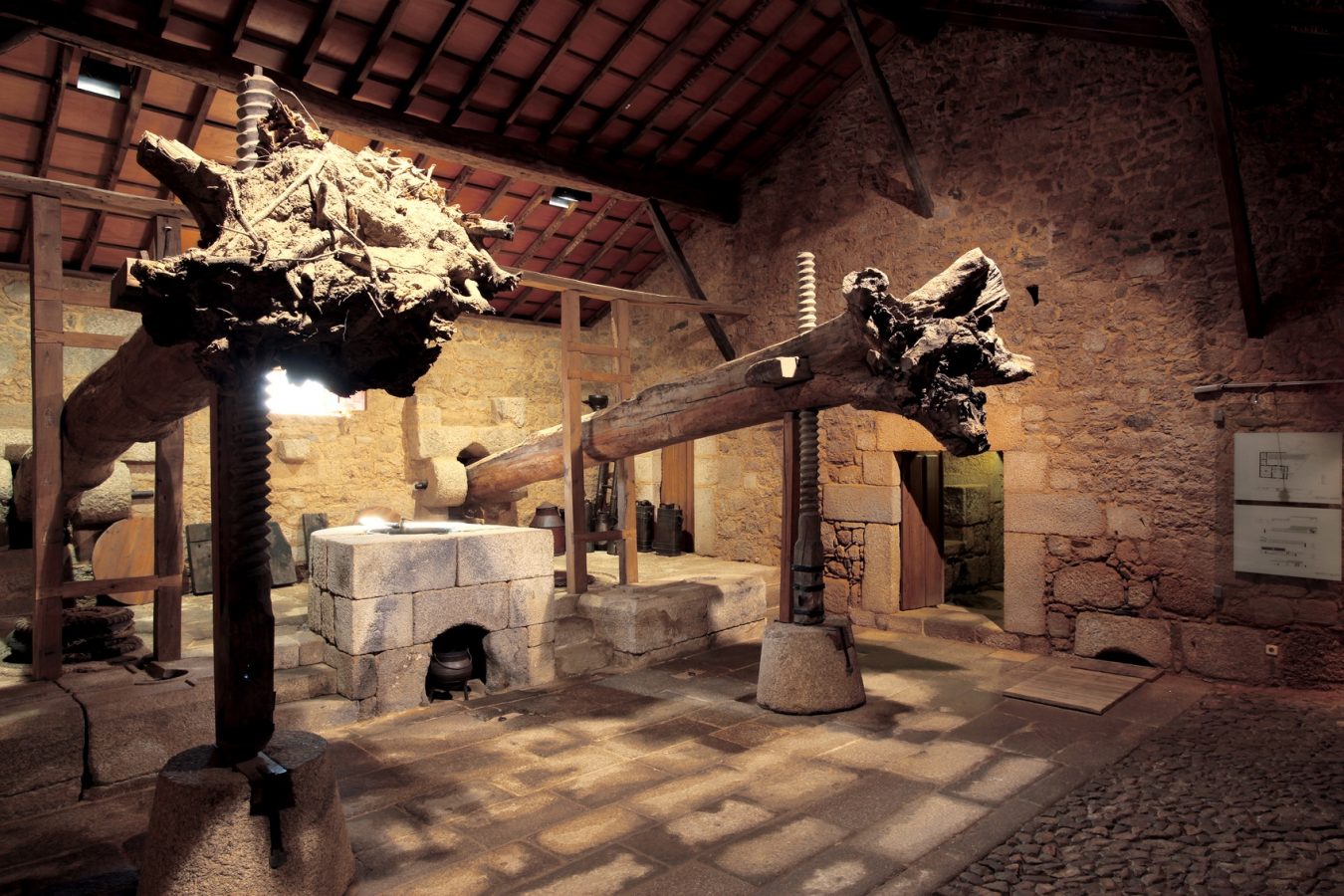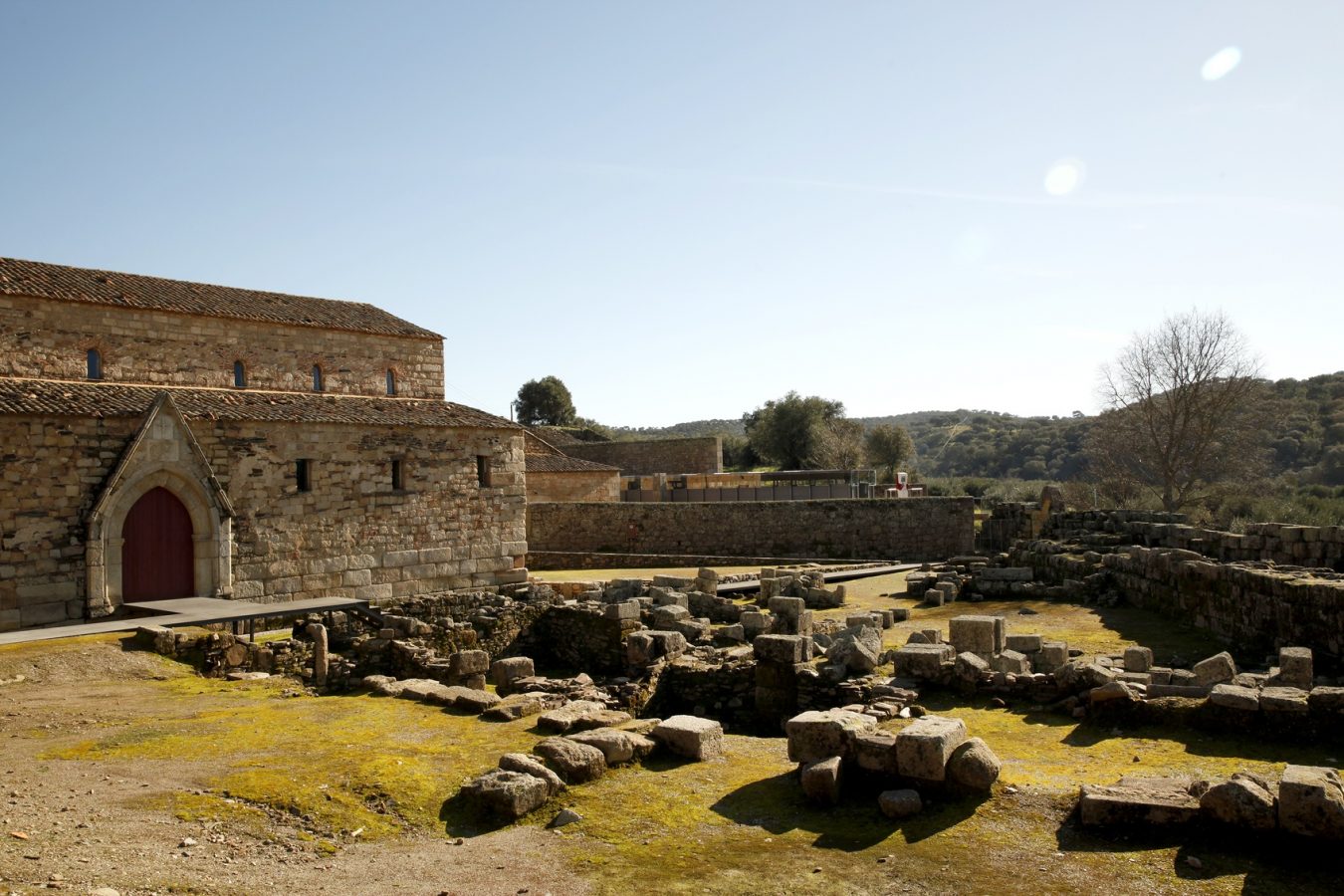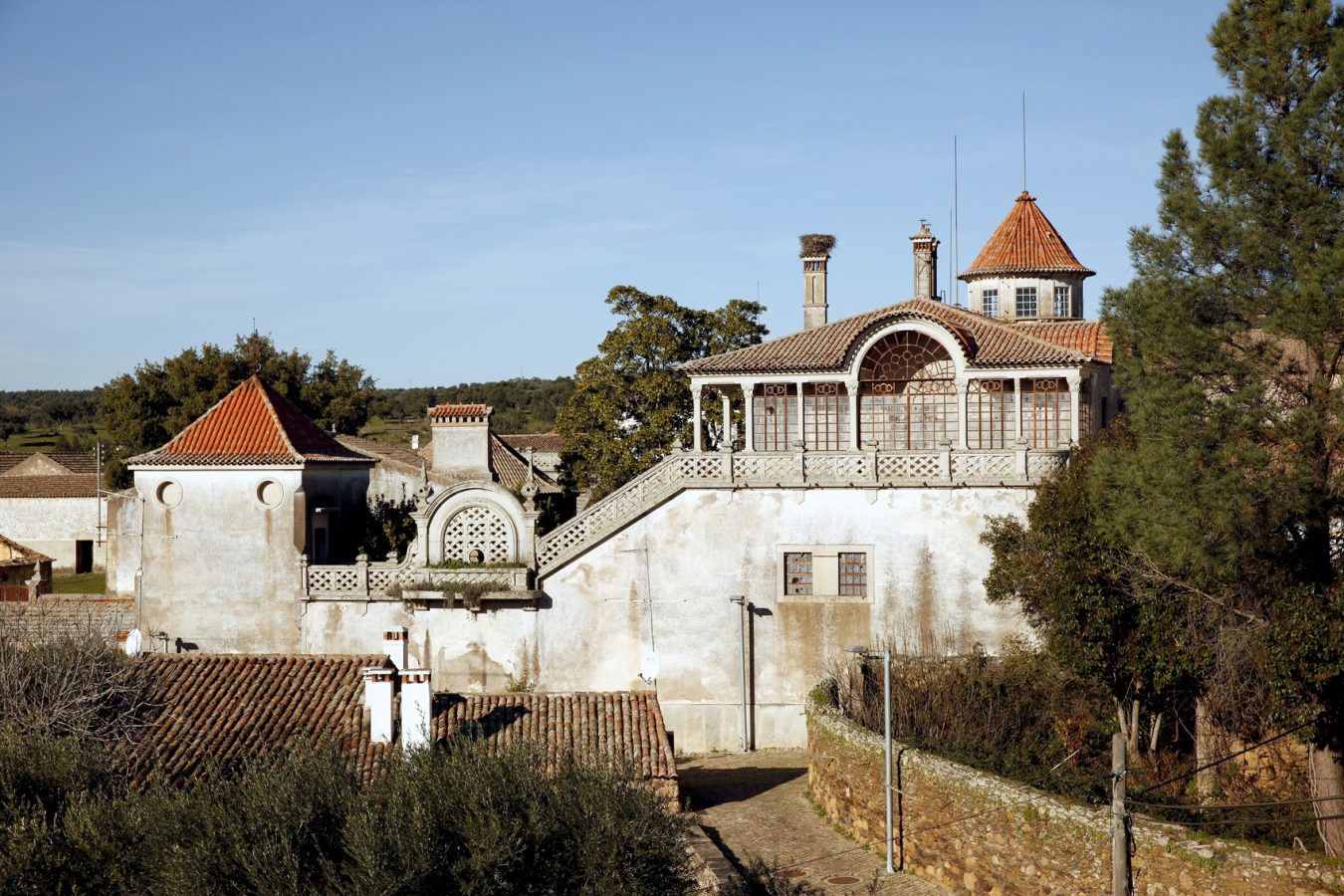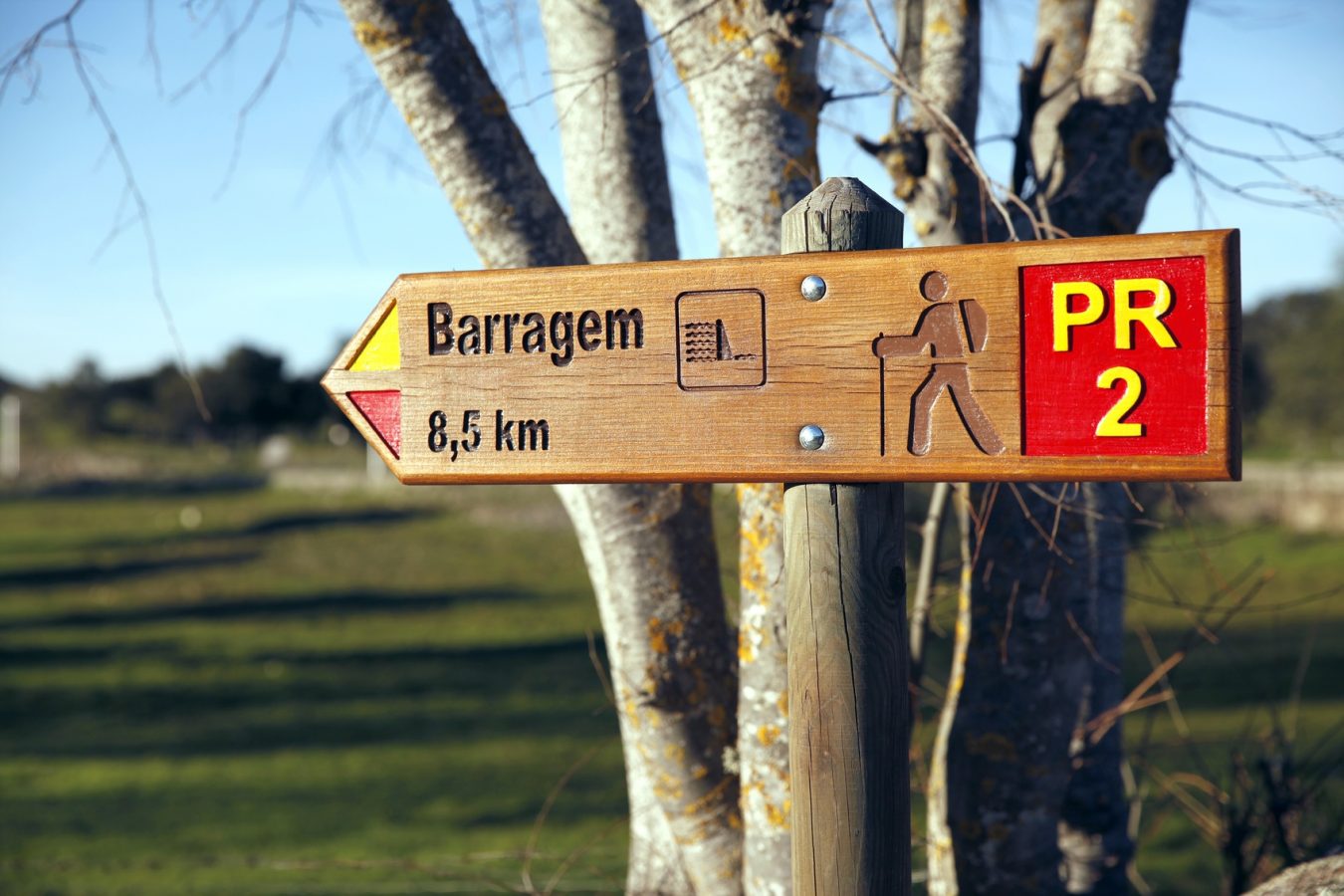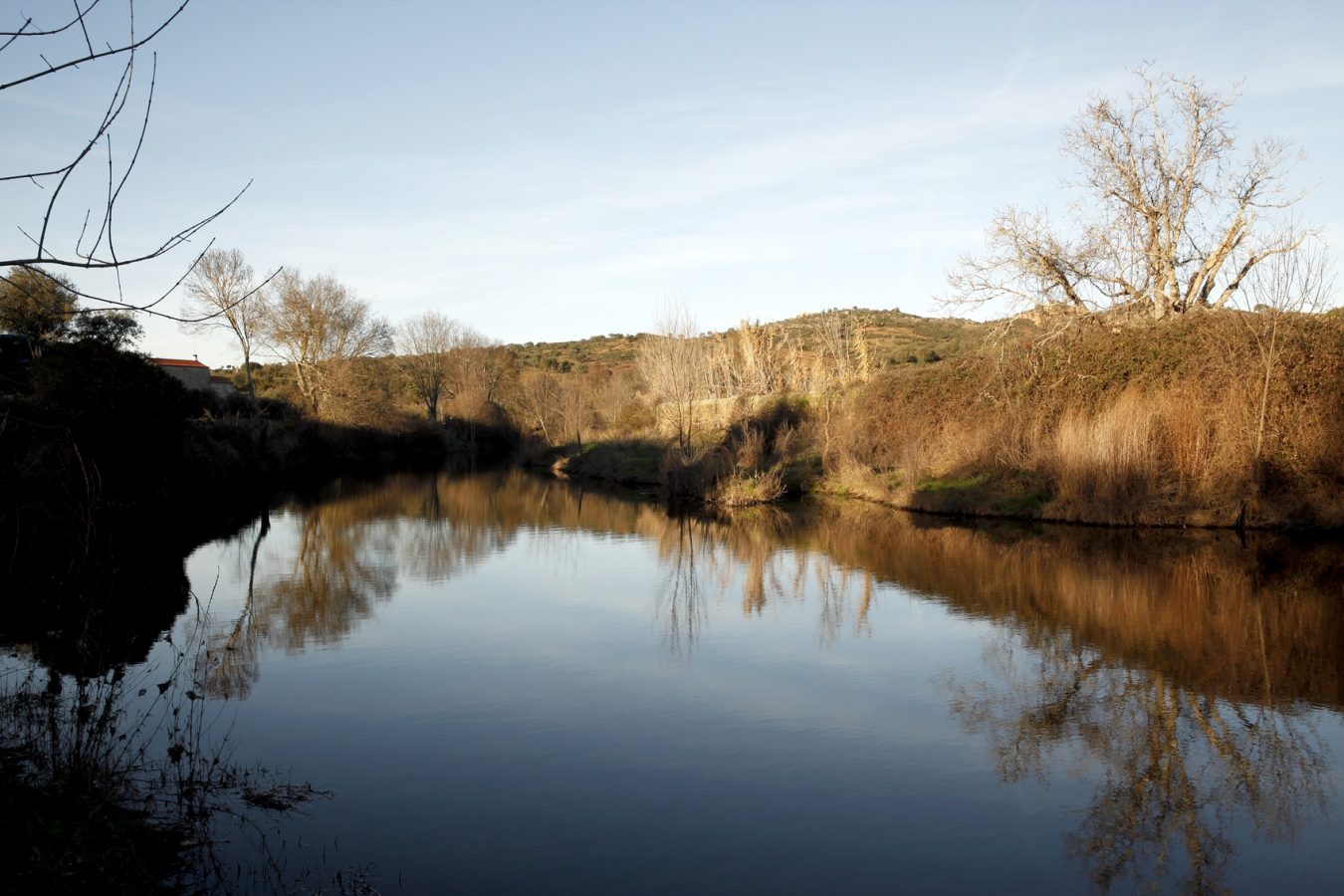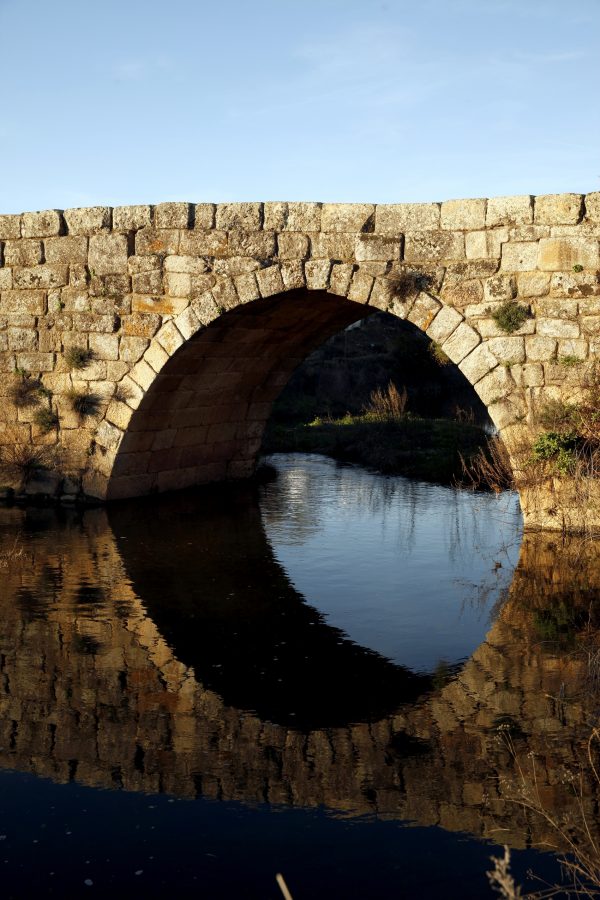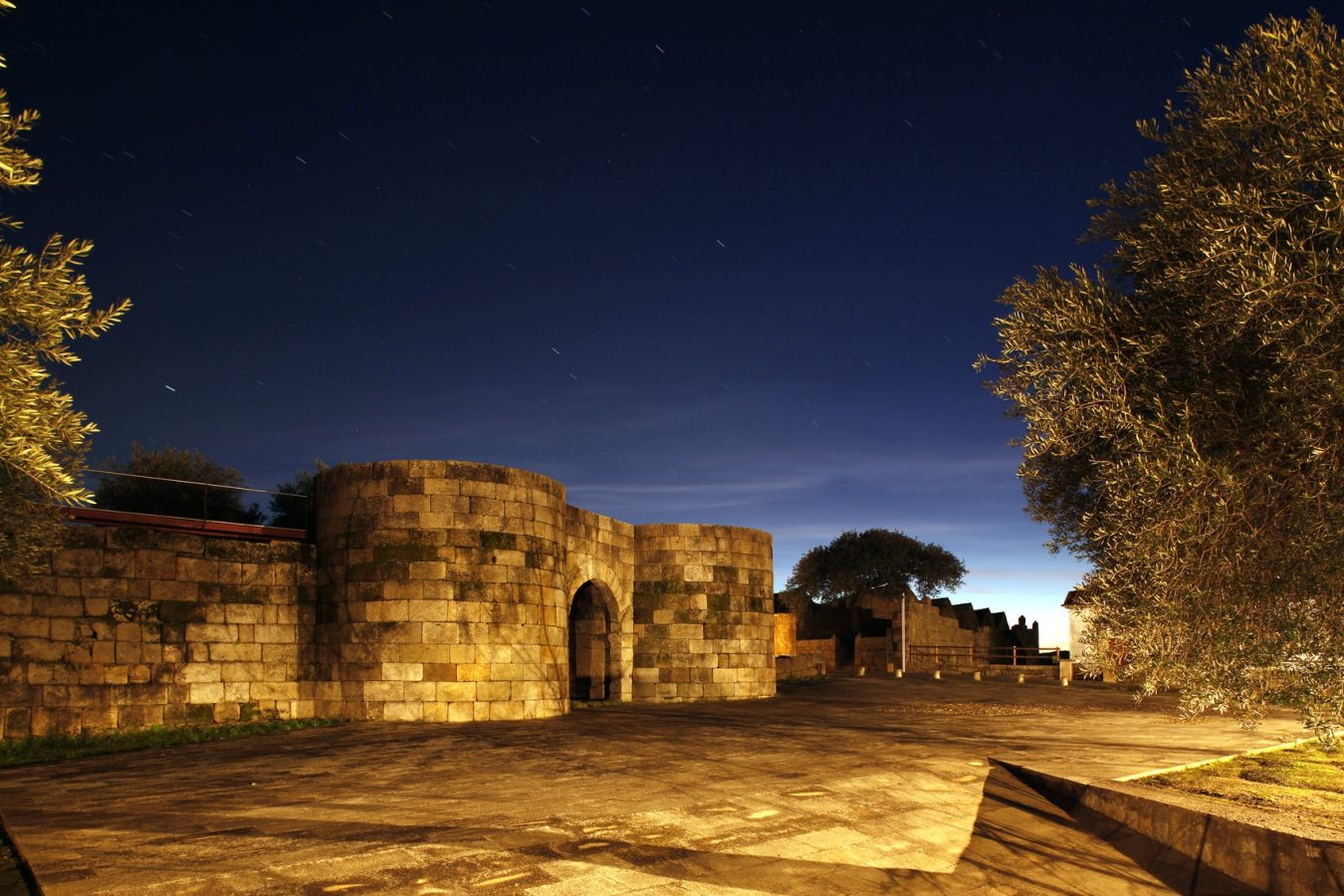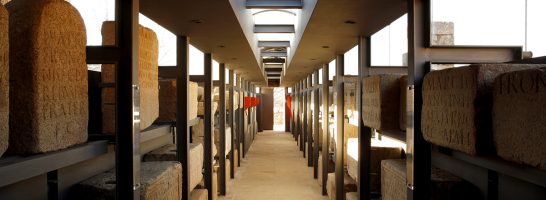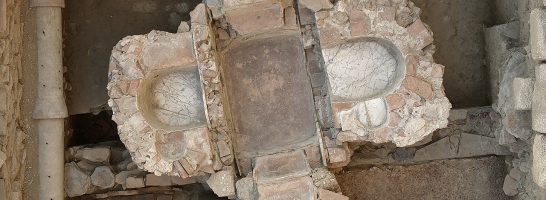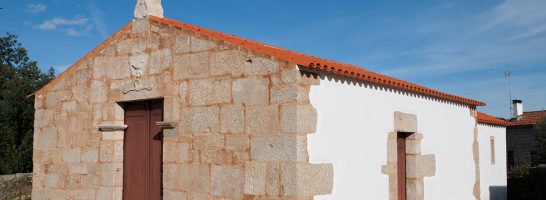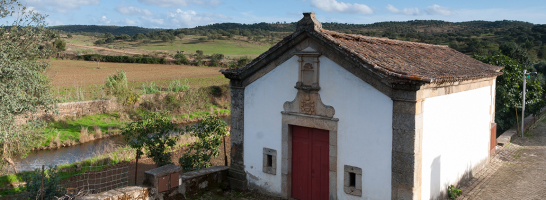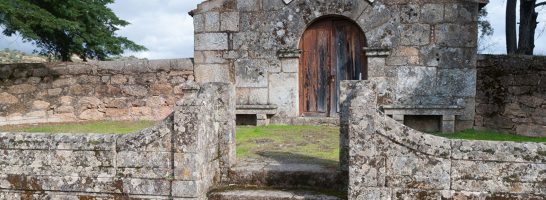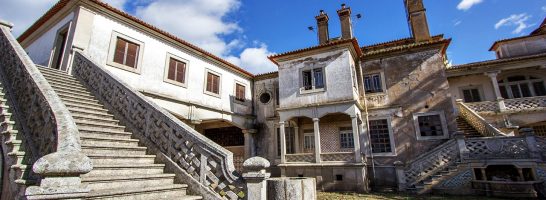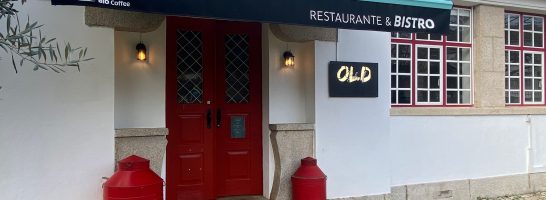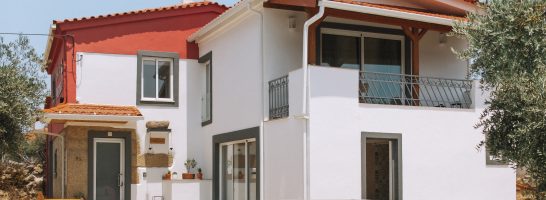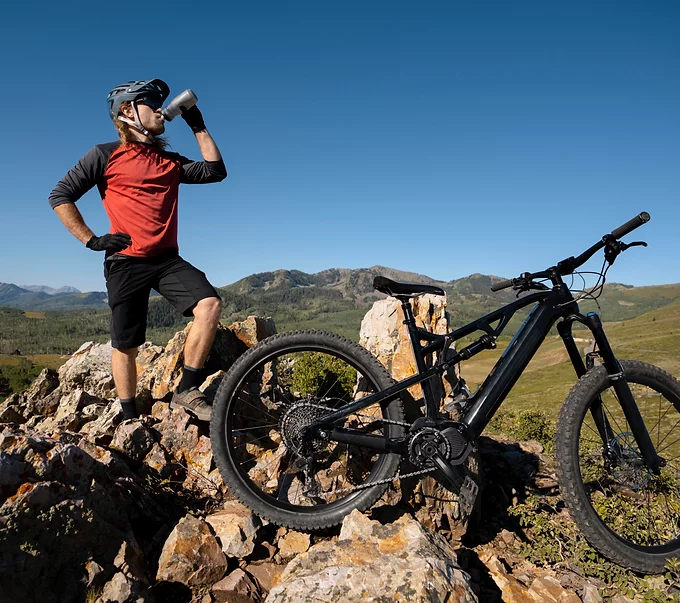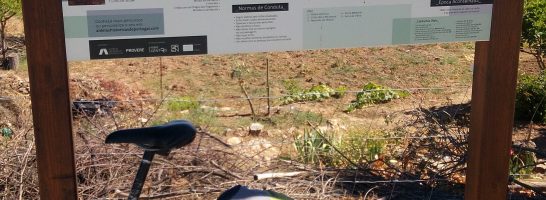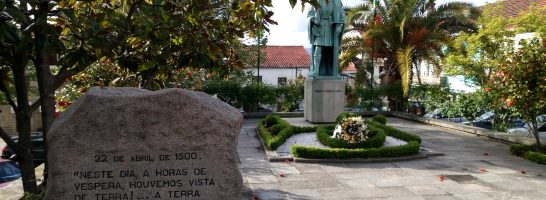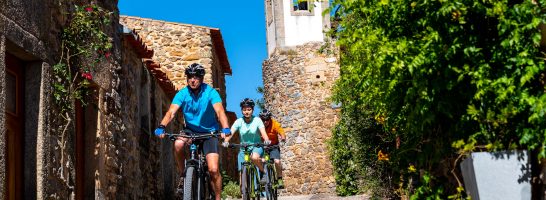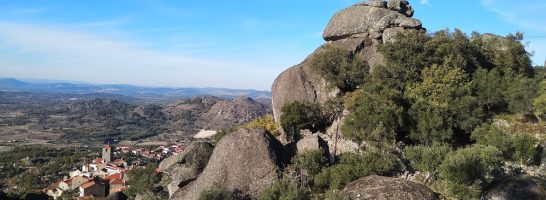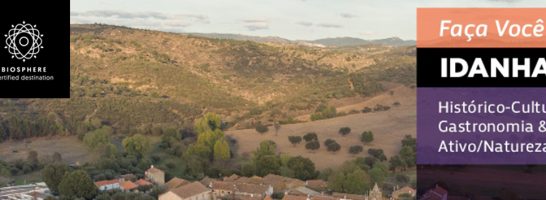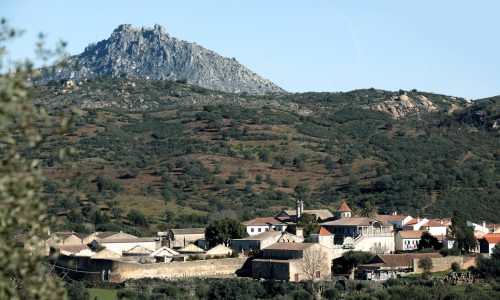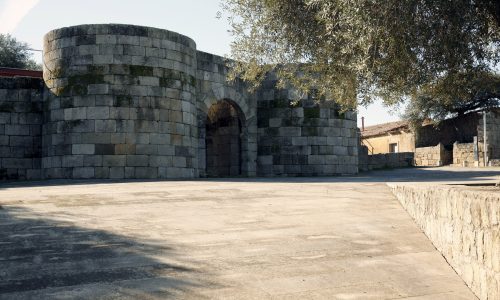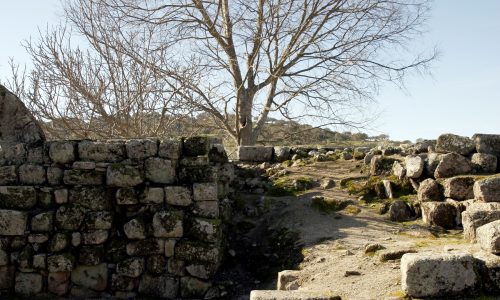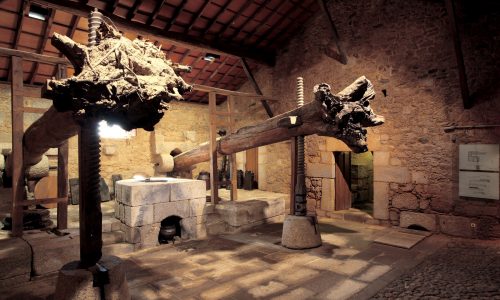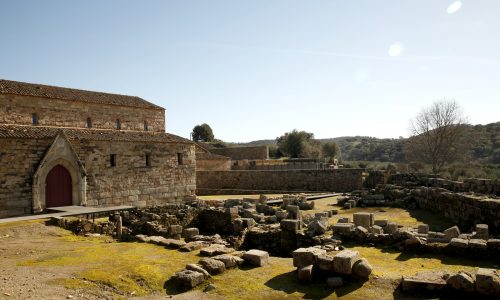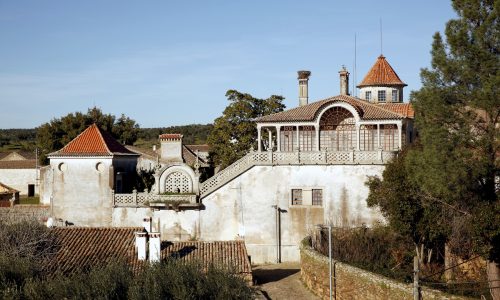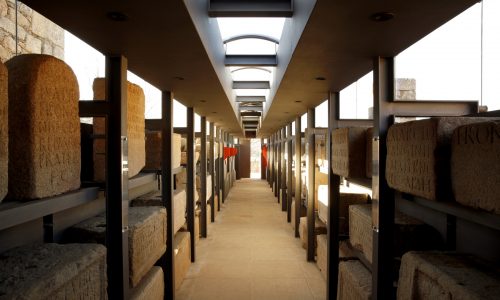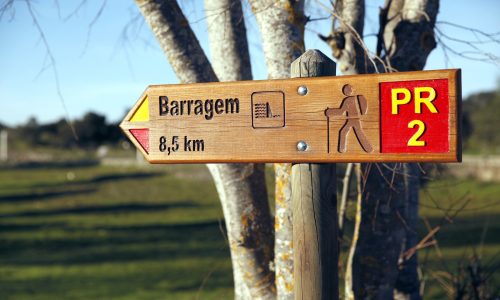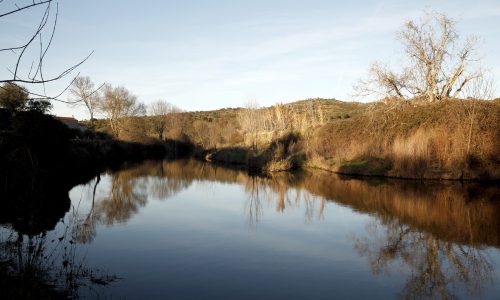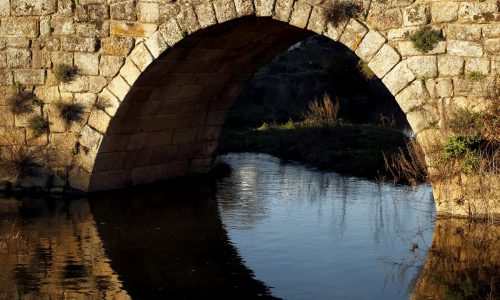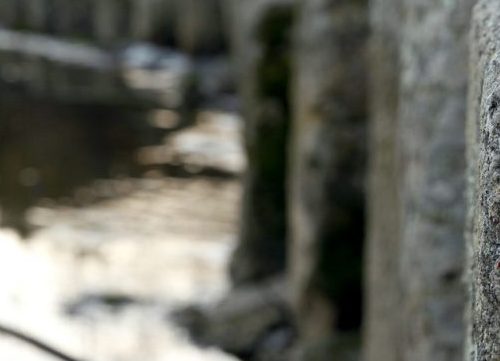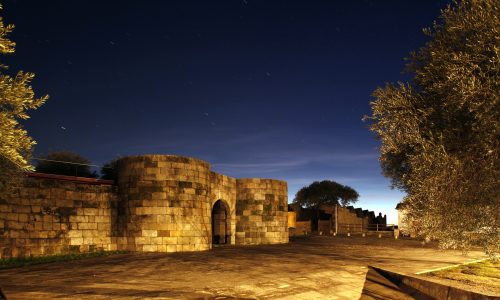Idanha-a-Velha
There are many traces, among the modest houses, of the ancient Roman city, Civitas Igaeditanorum. A temple atop the forum, some houses with patios and even a large public thermal baths structure were identified in this meandering layout, carved out by the Pônsul River. By the end of the Empire, the walled city was undergoing a transformation, and it adopted a new religion, preserving from that remote period two baptismal fonts (pools in which baptisms were carried out). Between them, the Cathedral (Santa Maria Church) is the magnificent summation of the intense history of this city, today a Historical Village
History
Our history your time
Nestled between the Pônsul River and three gentle hills, we find the modest Idanha-a-Velha. Underneath its humble urban fabric lie the ruins of a city with a vast history. Founded by the Romans at the end of the 1st century BC, it was called Oppidum Stipendiarium in the time of Augustus, becoming Civitas Igaeditanorum between 69 and 96 AD (reign of the Flávios), at which time it was promoted to a municipium. The current village offers a glimpse, here and there, of the remains of this Roman city. The temple podium has been preserved in the forum, the monumental centre of the civitas. It is thought to have been consecrated to imperial worship. It sat on a platform supported by a cryptoporticus, of which important vestiges have been preserved. And it is over the ancient temple that, in medieval times, the Templar tower would be built. Some houses of the city have been identified, consisting of a central courtyard, and their memory was left drawn on the pavement next to the North Gate. Under the old Tourism Office, and next to the old Cathedral (Santa Maria Church) the outlines of other domus appear. At one of them, located under the Epigraphic Archive, the peristylum (central courtyard) decorated with frescoes, can be visited today. The remains of a public spa and the bridge over the Pônsul are visible outside the ancient walls (3rd/4th century AD). It is this wall, built with columns, epigraphs and friezes of the imperial city that we can visit today. It had circular towers and at least two gates, north and south, the latter recently rediscovered. Shortly after the construction of this wall, the city and its territory were integrated into the Suebi kingdom. In the mid-6th century, the diocese of Egitânia was established, the name by which the city came to be known. In 585, with the end of the Suebi kingdom, the Visigothic kingdom begins, maintaining some of the city’s vitality. In 715, Egitânia was taken by the Muslims, but it is not clear whether they lingered here. But its key position, between the Christian and Muslim world, gave it a strategic importance that the Roman road from Mérida to Braga reinforced. Knowing early on the military rigors of the Reconquista (“Reconquest”), its definitive possession took place during the reign of King Sancho II, who granted it a charter in 1229. Shortly thereafter, it was donated to the Templars who would maintain guardianship over it, a measure intended to maintain the organisation and settlement of this territory. The Templars were succeeded by the Order of Christ, to whom it belonged until the Order's extinction in 1834. During the time of the Templars, the strengthening of the border with Castile to the east cut off the old Roman road, which had given strategic importance to the site since antiquity. The city was hopelessly isolated and situated in the interior of the new territory which made up the Portuguese kingdom. Settlement failures followed, leading to the city wasting away. D. Manuel gave it a new charter in 1510, symbolically represented through its pillory, wherein it was already designated as Idanha. In 1762, it still held village status and was integrated in the region of Castelo Branco. In 1821, it became the seat of a small municipality, extinct in 1836, transitioning definitively into the municipality of Idanha-a-Nova. Still in the 19th century, individual appropriation of Comenda lands took place and some estates were formed, the largest being that of the Marrocos family, which totally encompassed the people and houses of the small village. The isolation the village experienced resulted in the preservation of its main points of interest, having been integrated in the restricted group of Historical Villages, together with the village of Monsanto. Its integration into the AHP (Aldeias Históricas de Portugal–Historical Villages of Portugal) network promoted its requalification and valorisation. The interventions were based on the heritage built over several periods, crossing contemporary architectural language in clear, and deliberate, contrast with the surviving ancient vestiges, making it another point of interest for those visiting the village. A Historical Village carefully adapted for those who live here and for those who visit it.
What to see
What to do
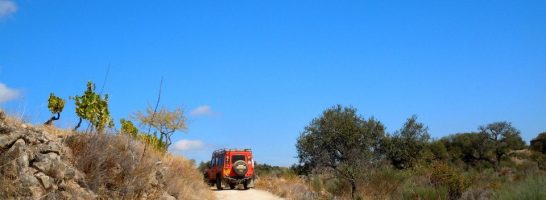
Adventure and nature trips
We are a registered tour operating company and we base our activity on the values of legal compliance, nature protection and sustainability. We operate according to the Portuguese legislation and we hold a special accreditation from the Institute of Nature Conservation and Forests allowing us to drive inside Nature Parks and other protected areas (where permitted)- We are members of the Natural.pt brand (www.natural.pt), reserved for companies who adhere to the programme. Following the recent pandemic we got our Clean & Safe seal from the Tourism Authority signifying our compliance with the official health requirements for the prevention and control of infections. Our trips are much more than just going from A to B and we distinguish ourselves for having a higher purpose: the knowledge and promotion of the historical, cultural and environmental heritage of Portugal, so that in the end our guests will have lots of stories to tell. In each new journey through some of the most beautiful and remotest places in mainland Portugal, we discover a unique, authentic and truly surprising country with a sense of adventure and discovery that enriches us as human beings. Our offer is based on a personalised service with tailor-made trips meeting the personal interests of our guests. We are constantly exploring and spending countless days on the ground in contact with the local people and organisations in search for the best places of interest and the best routes. As a result of this research, we have acquired a deep knowledge of the whole country which allows us to give our guests a renewed level of novelty and differentiation in each event. During our events we privilege the contact with nature in a legal and responsible manner, with the aim to reduce the impact of our passage, by working with official entities and other environmental organisations. Every year we plant many autoctonous trees in an effort to make Dream Overland a carbon-neutral company, an action that our customers can support and partake in. With our trips we contribute to the social cohesion and economic sustainability of local communities, through the knowledge and promotion of their traditions, handicrafts, produce and local heritage.
